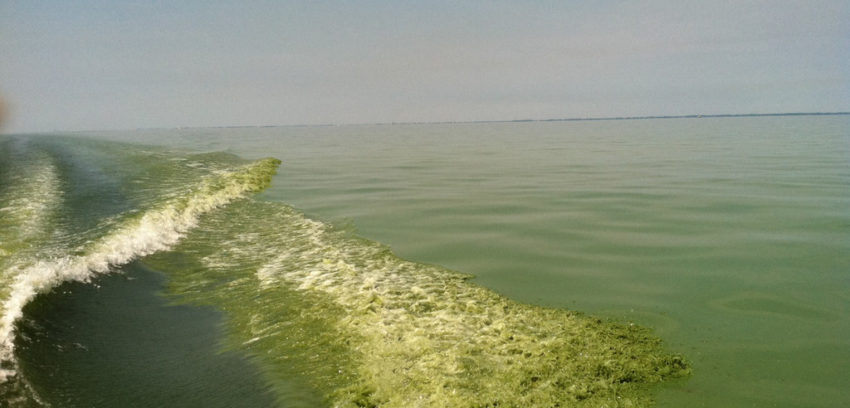Editor’s note: This is part of an ongoing series highlighting the local impact of Trump’s policies in key counties in MI, PA, WI, and FL.
Every summer, Lake Erie – one of the five Great Lakes – draws thousands of tourists to its beaches, generating millions in economic revenue supporting the livelihoods of many Erie County, Pennsylvania residents, families and businesses.
But something is in the water in Lake Erie.
In recent years, toxic algae has infested Lake Erie’s water, shutting down tourist attractions such as beaches at Presque Isle State Park in Erie County during key summer months, depressing tourist activity and potentially costing the area needed revenue.
And despite this annual environmental crisis, the Trump Administration quietly attempted to cut $270 million dollars from the Great Lakes Restoration Initiative, a federal program designed to protect the Great Lakes from environmental perils such as toxic algae — only backtracking under pressure after public outcry.
“This is no time to let down our guard. Dangerous algal blooms fueled by fertilizer runoffs in the western Lake Erie basin continue. This month there have been worrisome blooms closer to home that have been deemed unsafe for pets. A 2017 joint U.S.-Canadian report said Lake Erie’s ecosystem is in ‘poor’ condition and continues to deteriorate,” said a June 2018 editorial by GoErie.com.
Since the Great Lakes Restoration Initiative was launched in 2010 under the Obama Administration, reporting notes that “general tourism spending in Erie increased by 11 percent from 2010 to 2016” and that “the travel industry grew to represent 9.8 percent of the region’s employment in 2016, an increase of 7 percent since 2010.”
Every federal dollar invested in the Great Lakes Restoration Initiative is expected to produce $3.35 of economic activity in return, and businesses and real-estate developers have so far invested $250 million in hotels and developments along Lake Erie’s waterfront.
But with the risk of algal blooms appearing year after year, and the Trump Administration’s continued reluctance to support the conservation of Lake Erie, the county’s once prosperous economic outlook is beginning to look less promising.
Last month, the Erie County Department of Health warned tourists and locals against swimming at several Presque Isle beaches, stating that the blue green-algae known as cyanobacteria was unsafe for children and animals, and, if swallowed, could cause symptoms such as “diarrhea, vomiting, abdominal pain, numbness in the lips, tingling in fingers and toes, dizziness and headache.”
In 2018, Presque Isle was forced to close several of its beaches on the 4th of July, a historically high revenue-producing summer holiday. Despite the recurrence of algal blooms, and the fact that Trump is counting on the support of Erie County voters in 2020, he nevertheless proposed slashing the Great Lakes Restoration Initiative budget by ninety percent this year.
In response, in June 2019, a bipartisan group of governors — Gretchen Whitmer of Michigan, Tony Evers of Wisconsin, Tom Wolf of Pennsylvania, J.B. Pritzker of Illinois, and Gov. Mike DeWine of Ohio – called on the President to fund the program at its full capacity, stating the cuts would “cost jobs, hurt tourism and jeopardize public health.”
In the 2016 election, President Trump won the support of Erie County over Hillary Clinton by just 1,957 votes, helping propel him to surprise electoral victory in Pennsylvania. But in 2012, Erie County swung the other direction, voting decisively for President Barack Obama in his reelection effort.
With swing-voters in Erie County slated to once again play a crucial role in determining the outcome of the 2020 election, it remains unclear if the President’s controversial attempt to slash funding for the Great Lakes Restoration Initiative will have an outsized impact on the campaign.

